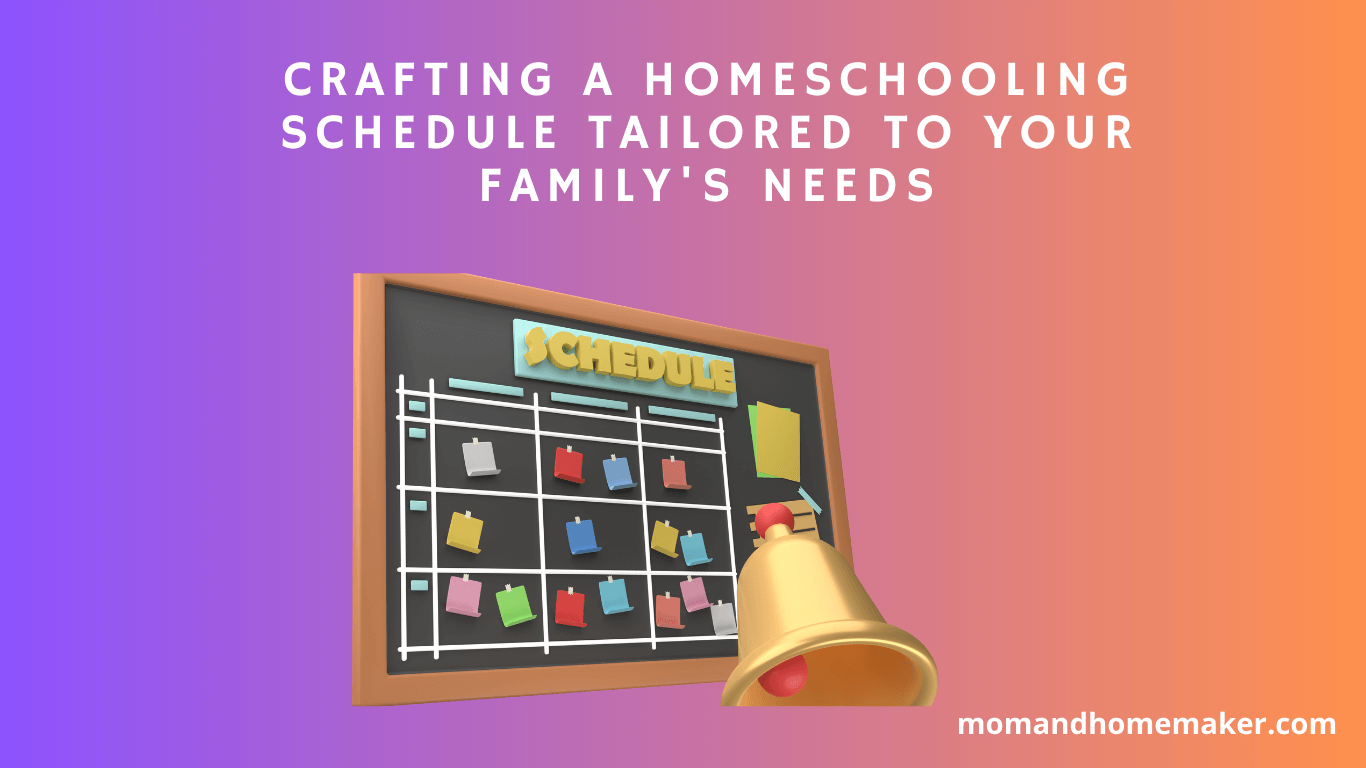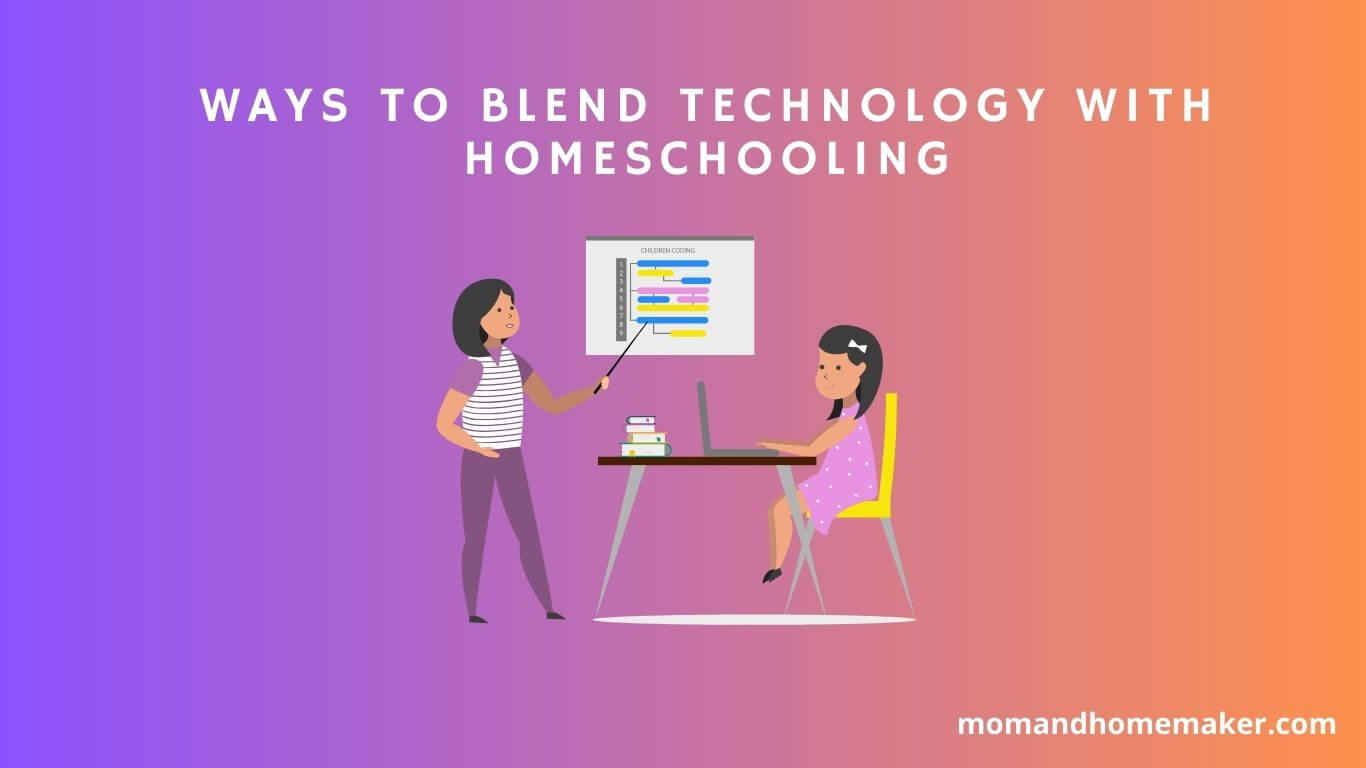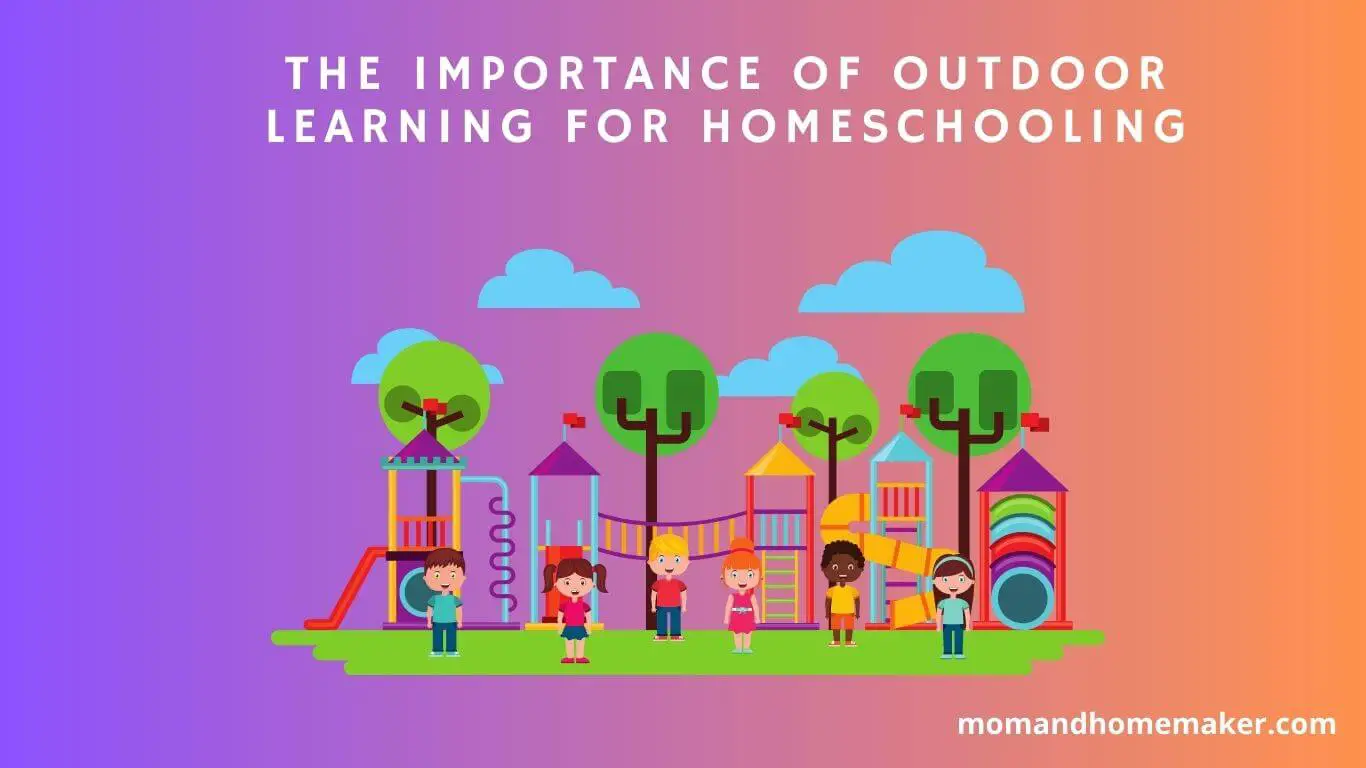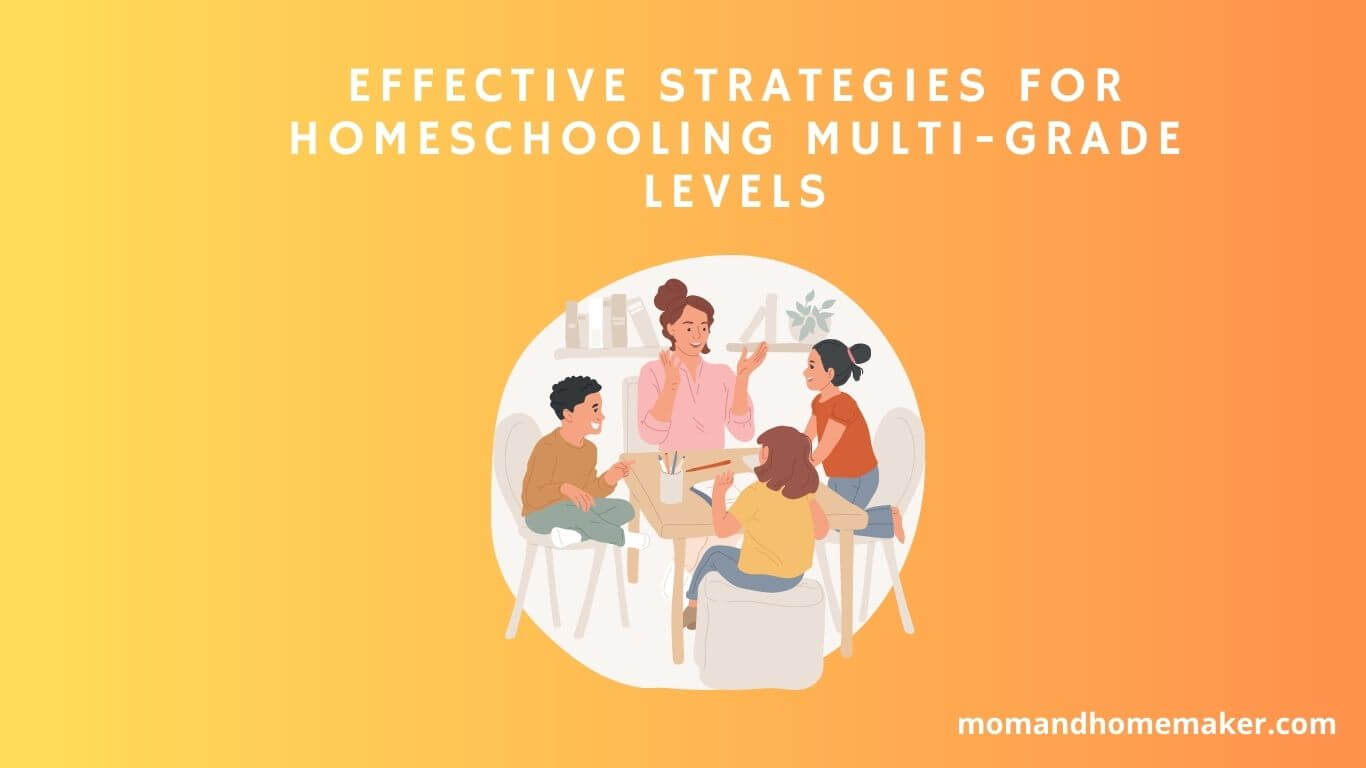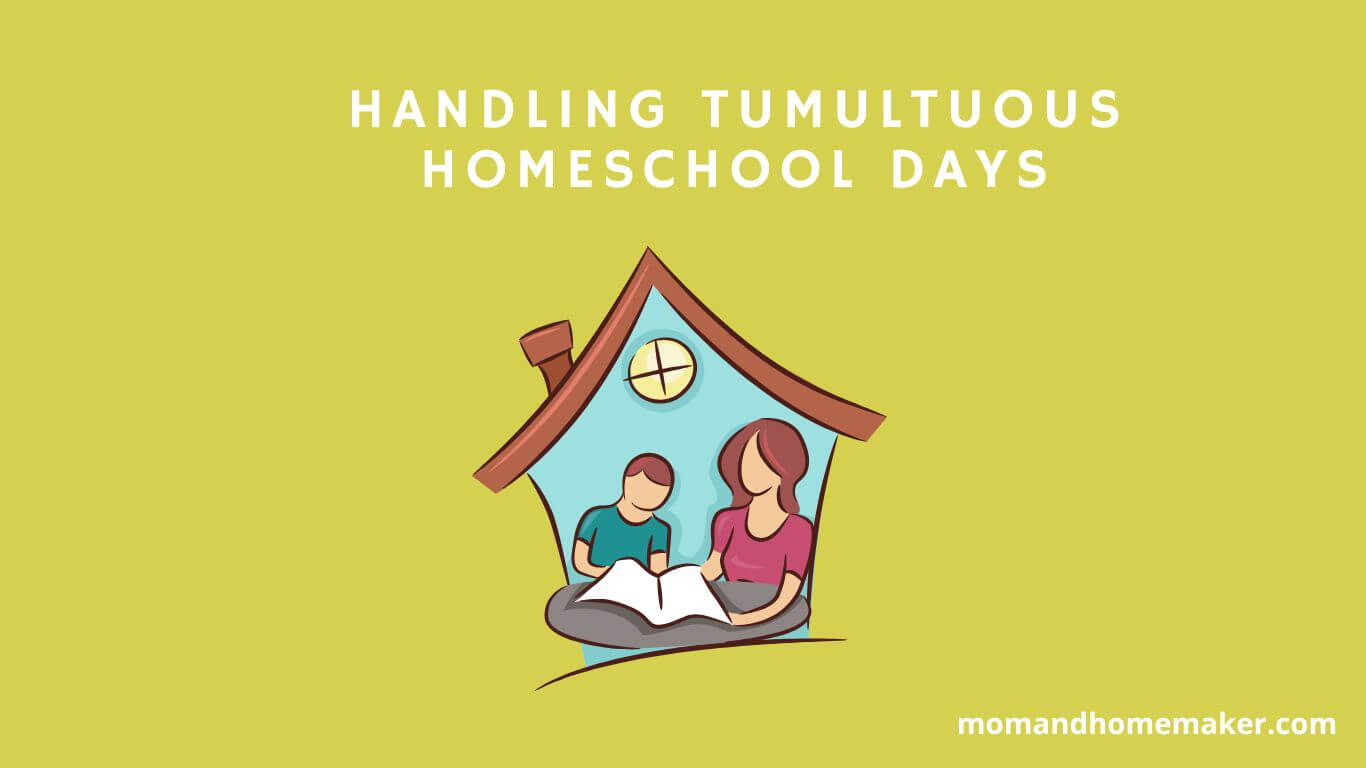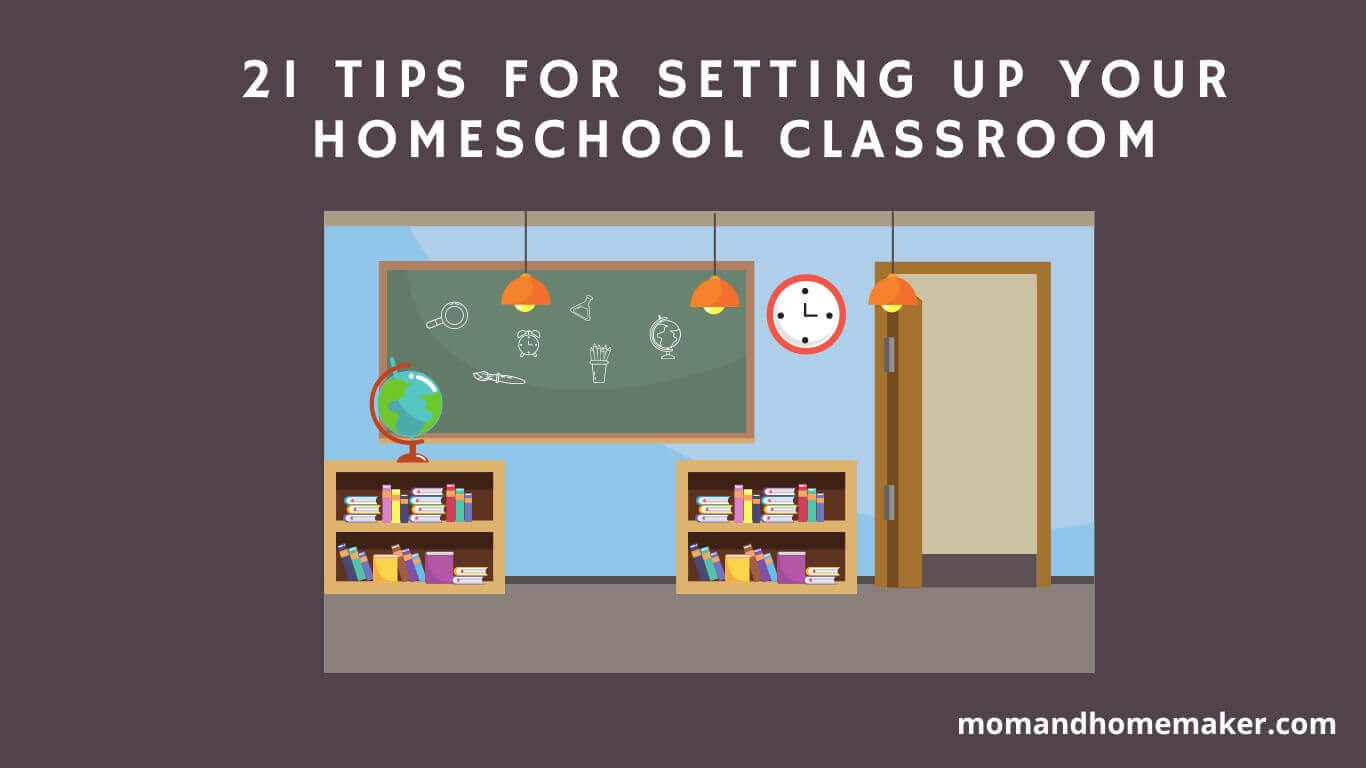I know how challenging it can be to set up a learning environment in your own home. It’s not easy to balance the roles of parent and teacher while also providing a stimulating and structured atmosphere for your kids. One thing that has helped me immensely is setting clear rules for our homeschool classroom.
These rules are not meant to stifle creativity or make learning boring. Quite the opposite, actually. Setting expectations for behavior and work habits frees up more time and energy for engaging lessons and projects. It helps everyone stay on track and focused throughout the day.
Whether you’re new to homeschooling or a seasoned pro, taking the time to establish some guidelines will benefit both you and your children.
Table of Contents
Benefits Of Establishing Rules
Establishing rules in your homeschool classroom can be highly beneficial for both you and your children. By setting clear expectations, you create an environment that promotes learning and growth. Rules provide structure and stability, which can lead to increased productivity and less chaos. By establishing rules early on, you are able to prevent potential discipline issues before they arise.
When implementing rules, it is important to involve your children in the process. Ask them what they feel would be fair and reasonable guidelines for the classroom. This not only gives them a sense of ownership but also helps ensure that the rules will be respected. Be sure to take into account their age and developmental stage when creating rules, as this will help ensure they are appropriate and achievable.
Maintaining accountability is key in ensuring that established rules are followed. As the parent/teacher, it is up to you to enforce these guidelines consistently and fairly. This may require some creativity on your part, such as creating a rewards system or having consequences for breaking the rules. Regardless of the method chosen, accountability is crucial in making sure that everyone remains committed to following the established guidelines.
Understanding your child’s learning style is another important aspect of setting up a successful homeschool classroom. By taking into consideration how your child best learns (such as through visual aids or hands-on activities), you can tailor lesson plans to fit their individual needs.
In the next section, we will discuss ways in which you can identify your child’s learning style and incorporate it into your teaching approach.
Understanding Your Child’s Learning Style
Establishing rules for your homeschool classroom can be a challenging task. Once you have those rules in place, you’ll see just how well they work to keep everything running smoothly.
It’s essential to take your child’s learning style into consideration when developing a personalized approach to their education. Adapting the curriculum to fit their preferred learning style can make all the difference in how well they understand and retain information.
Find the various learning styles in the table below;
| Learning Style | Description |
|---|---|
| Visual | Learns best using visual aids and demonstrations |
| Auditory | Learns best by listening to explanations and instructions |
| Kinesthetic | Learns best by actively participating in hands-on activities |
| Read/Write | Learns best by reading and writing instructions and explanations |
| Logical | Learns best by understanding the logical steps in a process |
| Social | Learns best by collaborating and interacting with peers |
| Solitary | Learns best by working independently |
Identifying Areas Of Concern
Take some time to observe your child and identify any areas where they may struggle. This can include understanding certain concepts, staying focused during lessons, or managing their time effectively. Parent-child dynamics also play a significant role in homeschooling. While you may be the primary teacher, it’s essential to maintain a healthy relationship with your child.
It’s important to establish personal boundaries and ensure that both you and your child feel respected and valued in the classroom environment. This will help create an atmosphere of mutual trust and understanding.
Learning obstacles can also arise during homeschooling. Whether it’s due to a lack of motivation, difficulty grasping certain concepts, or other factors, it’s crucial to address these issues early on. By identifying potential obstacles before they become major problems, you can work with your child to develop strategies for overcoming them.
As you move forward with setting rules for your homeschool classroom, keep these factors in mind. Understanding the challenges that may arise can help you create an environment that is conducive to learning and growth for both you and your child.
Creating Clear And Concise Rules
Did you know that schools with clearly defined rules and expectations have better academic performance and fewer discipline problems? This is why setting clear and concise rules for your homeschool classroom is crucial.
As a parent, you are responsible for rule enforcement, creating consequences, and reinforcing rules to ensure a successful learning environment. When creating the rules, it’s essential to involve your child in the process. This not only makes them feel heard and valued but also helps them understand the importance of following rules.
Start by brainstorming together what behaviors are acceptable and which ones aren’t. Make sure to set clear expectations, so there’s no confusion about what is expected from them. Parental involvement doesn’t stop at rule-making; it extends to rule enforcement as well.
Negotiating compromises is also an important aspect of involving your child in the rule-making process. It’s important to remember that rules should be fair and reasonable for both you and your child. By negotiating compromises together, you can come up with rules that work for everyone involved. This also helps promote compromise as a valuable life skill.
Create consequences for breaking the established rules and make sure that they are consistently enforced. Reinforce the importance of following these rules by providing positive feedback when your child follows through on expectations. By doing this, you’re instilling values that will serve them beyond their time in school.
Consistency Is Key
According to a recent study, children who have consistent routines and expectations are more likely to develop self-discipline and succeed academically. To ensure consistency in your homeschool classroom, consider implementing these three discipline methods:
- Clear consequences for breaking rules
- Regular check-ins with your child to discuss progress and areas for improvement
- Consistent enforcement of established rules
It’s also important to establish classroom routines that support your long-term goals for your child’s education. This might include scheduling regular breaks throughout the day or setting aside specific times for independent study or group activities.
It’s crucial that you remain actively involved in maintaining accountability measures within your homeschool classroom. This might mean regularly reviewing your child’s progress, providing additional support or resources as needed, and adjusting expectations as necessary to ensure that they continue to grow and thrive in their education.
Consistency is key when it comes to establishing a successful learning environment for your child at home. By prioritizing discipline methods, classroom routines, accountability measures, parental involvement, and long-term goals, you’ll be well on your way toward creating an enriching educational experience that supports your child’s growth and development both now and in the future.
Consequences For Breaking Rules
When it comes to setting rules for your homeschool classroom, it’s important to establish consequences for breaking those rules. Natural consequences can be a great teacher, especially for younger children. For example, if they don’t complete their homework assignments on time, they won’t get credit for that work and will suffer the consequences of a lower grade. It’s important to remember that age-appropriate discipline is key; you don’t want to be too harsh or lenient.
Teaching responsibility is another important aspect of addressing rule-breaking in the homeschool classroom. If a child consistently breaks a certain rule, it might be worth looking into underlying issues that could be contributing to their behavior. Perhaps they are struggling with the material or feeling overwhelmed by their workload. Parental involvement and communication with your child can help identify these issues and find solutions that work for everyone.
At the end of the day, consequences should be seen as a tool for growth and learning rather than punishment. By using natural consequences and age-appropriate discipline, you are helping your child understand the importance of following rules and taking responsibility for their actions. In the next section, we’ll explore how positive reinforcement can also play an important role in creating a successful homeschool environment.
Positive Reinforcement
Research has shown that positive feedback and encouragement techniques are more effective in shaping behavior than punitive measures alone. One popular method is the use of behavior charts. These charts allow children to visually see their progress and work towards a goal. For example, you can create a chart where your child earns a sticker or checkmark for completing tasks or exhibiting good behavior throughout the day. Once they reach a certain number of stickers, they can earn a reward such as extra screen time or a special treat.
Another option is to implement an incentive program. This could be as simple as earning points for completing assignments or chores that can be redeemed for prizes or privileges. The key is to find what motivates your child and tailor the program accordingly.
It’s important to remember that incentives should not replace intrinsic motivation but rather act as a supplement. As we strive to create a positive learning environment, it’s crucial to balance flexibility and structure. Positive reinforcement should not be used as a crutch for poor planning or lack of boundaries. However, when used effectively, rewards and motivation can help establish healthy habits and reinforce desired behaviors in our homeschool classroom.
Balancing Flexibility And Structure
On one hand, we want to create a learning environment that is adaptable to the needs of each individual student. However, we also need some level of consistency in order to maintain an effective routine.
So how do we find this balance? It starts with taking an honest look at our own tendencies towards flexibility versus rigidity. Are we naturally more laid-back or do we tend to stick rigidly to schedules and routines? Once we understand our own approach, we can begin adapting it as needed to better meet the needs of our students.
Individualized instruction is key here – each child will have their own unique learning style and preferences. By using personalized planning methods, such as creating individualized lesson plans or allowing for student choice within certain assignments, we can create an environment that is both structured and flexible.
By remaining open-minded and willing to make changes as needed, we can continue finding the right balance between flexibility and structure in our homeschool classroom.
Adjusting Rules As Needed
As we move forward with our homeschooling journey, I am aware that the dynamics may change and our needs may evolve. Therefore, it is essential to have rule flexibility in place to ensure smooth sailing. Adapting rules as needed can help us respond promptly to challenges that arise and make necessary adjustments.
| Tips | Explanation |
|---|---|
| Be open-minded | As parents, we must be receptive to new ideas and different ways of doing things. Homeschooling is a learning process for both parent and child and being open-minded allows us to adapt to changing circumstances without resistance. |
| Communicate with your child | It is important to keep an open line of communication with your child so you can understand their needs better. If a rule is not working or causing problems, take the time to listen to your child’s concerns and work together on finding a solution. |
| Make changes when necessary | As our homeschooling journey progresses, it’s only natural that we will encounter unforeseen circumstances or situations that require a change in rules. Don’t be afraid to make changes when necessary so that you can continue providing the best education for your child. |
With changing dynamics and evolving needs, adapting rules is crucial for maintaining an effective homeschooling environment. By remaining open-minded, communicating with your child, and making changes when necessary, we can ensure that our homeschool classroom remains a positive learning space where growth and progress are attainable.
Communication With Your Child
One way to develop effective communication skills with your child is by practicing conflict resolution techniques. This involves empathizing with your child’s feelings and finding mutually beneficial solutions to problems. It’s also important to set boundaries and expectations for behavior in order to maintain a positive learning environment.
Empathy building is another crucial aspect of good communication between parent and child. Take the time to understand your child’s perspective and validate their emotions. This will help build trust and strengthen your relationship.
Moving forward, communication with co-teachers or tutors is an essential component of homeschooling success. By working together, you can create a cohesive learning environment that meets the needs of your child and supports their academic growth.
Communication With Co-Teachers or Tutors
When it comes to homeschooling, you may not always be the only teacher involved. Co-teachers and tutors can be a great resource for your child’s education, but it’s important to communicate effectively with them. Collaborating effectively means setting expectations from the beginning. Make sure everyone is on the same page about what your goals are, what curriculum you’re using, and how often lessons will take place.
It’s also important to address any concerns or potential conflicts early on. If you have specific boundaries or policies in place (for example, regarding discipline), make sure your co-teachers and tutors are aware of them. And if any issues do arise, don’t hesitate to address them directly and respectfully.
Finally, be willing to adapt as necessary. Homeschooling can be an ever-changing journey, and flexibility is key. Be open to feedback from your co-teachers and tutors and don’t be afraid to adjust plans or approaches if something isn’t working.
Importance Of Regular Check-Ins
As the old saying goes, ‘rules are made to be broken,’ but when it comes to education, setting guidelines is essential for success. Without structure and accountability, it can be easy to fall behind or lose focus. One way to ensure that you and your children stay on track is by implementing daily check-ins.
Whether it’s a quick morning discussion or a more formal meeting, taking the time to touch base each day can help keep everyone accountable and motivated. Finding an accountability partner outside of your immediate family can provide an extra level of support and encouragement.
Tracking progress is also important in any educational setting. Whether through grades, test scores, or other assessments, having a clear understanding of where you stand can help you set realistic goals and address any challenges that arise along the way.
By regularly checking in on progress and adjusting as needed, you can create a more efficient and effective learning experience for everyone involved.
Conclusion
In conclusion, setting rules for your homeschool classroom is essential to ensure a productive and positive learning environment. These rules should be designed to meet the unique needs and challenges of your family and focus on promoting respect, responsibility, and independence. By establishing clear expectations for behavior and consequences for breaking the rules, you can help your children thrive in their academic pursuits.
Remember, consistency is key when it comes to enforcing rules, so make sure to stick to them consistently. With a little effort and planning, you can create a successful homeschool classroom that fosters growth and achievement for your children.


